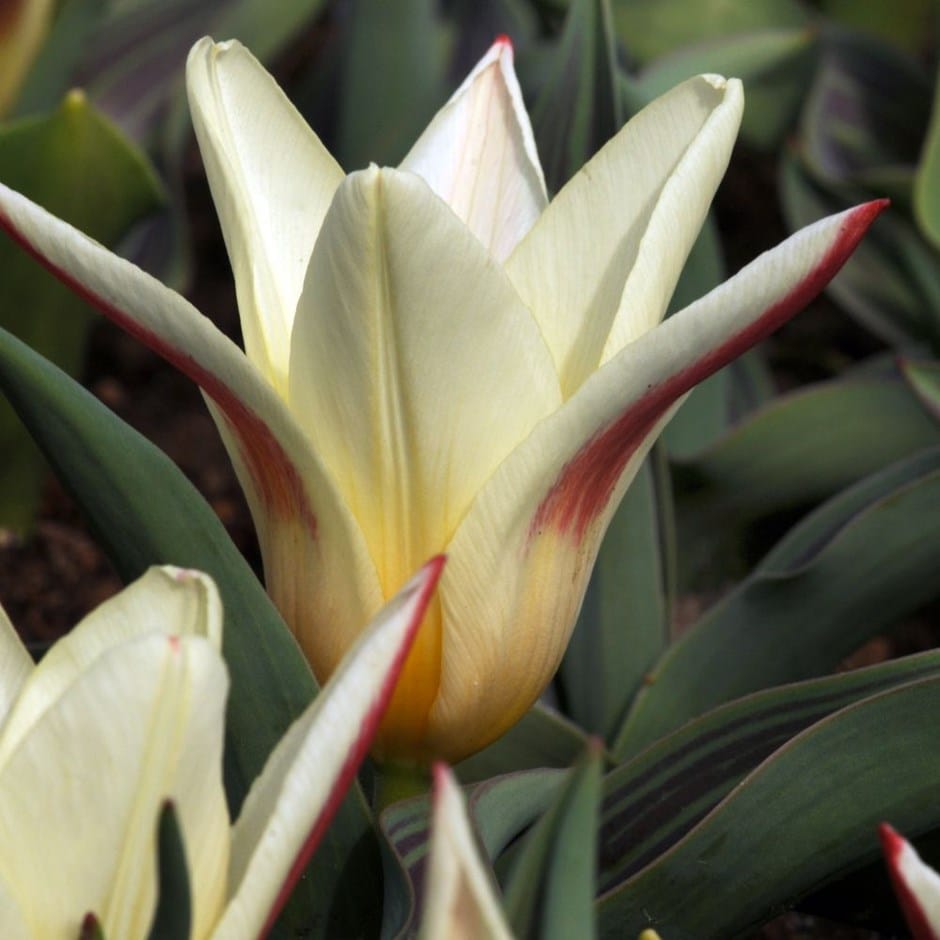Tulipa 'Johann Strauss'
Kaufmanniana Group tulip bulbs
- Position: full sun
- Soil: moderately fertile, moist but well-drained soil, or general purpose compost for containers
- Rate of growth: average
- Flowering period: March to April
- Hardiness: fully hardy
- Bulb size: 10/11
This compact and sturdy tulip is ideal for pots, rockeries or front of border positions, where it can be left in the ground to form a generous swathe. Its blue-green foliage is attractively mottled with deep burgundy/purple, and it forms a subtley colourful backdrop for the red streaked, creamy yellow flowers. Over the flowering period, their pointed petals splay outwards to form waterlily-like flowers, and it's then that their yellow eye is revealed.
These species tulips are adaptable for pot and border culture, as well as naturalising in meadows and wildflower schemes. Using fresh, good-quality compost, plant bulbs in pots from September to November. For borders, these tulips have some resistance to Tulip Fire and can be planted earlier in the autumn than other species, though a later planting after the first frosts (October) will reduce any risk. Plant bulbs 15-20cm (6-8in) deep and 10-15cm (4-6in) apart in fertile, well-drained soil. Alternatively, allow 7-9 bulbs per 30cm sq or 60-75 bulbs per m². If you’re unable to plant your bulbs immediately, they can be stored in a cool environment with good air circulation. Remove all the packaging and place them in a loose-weave jute sack before labelling and hanging up in a dry, unheated garden shed or well-ventilated greenhouse.
In spring, when the potted or border tulips are in active growth, apply a high-potash fertiliser (like Tomorite) each week until the leaves start to die back. Pinch off the spent flower heads as the petals fall, and let the stem and foliage die back naturally. Unlike border/bedding tulips, species tulips tulips can be left in the ground to flower in situ year after year.
If planting in a meadow in order to naturalise, make sure the grass is not cut until the foliage has completely died back.
In spring, when the potted or border tulips are in active growth, apply a high-potash fertiliser (like Tomorite) each week until the leaves start to die back. Pinch off the spent flower heads as the petals fall, and let the stem and foliage die back naturally. Unlike border/bedding tulips, species tulips tulips can be left in the ground to flower in situ year after year.
If planting in a meadow in order to naturalise, make sure the grass is not cut until the foliage has completely died back.
- Humans: Harmful if eaten; skin allergen; Pets: Ornamental bulbs - not to be eaten

